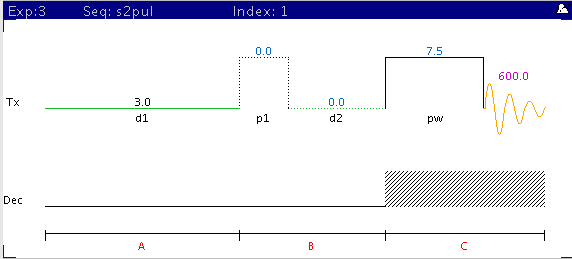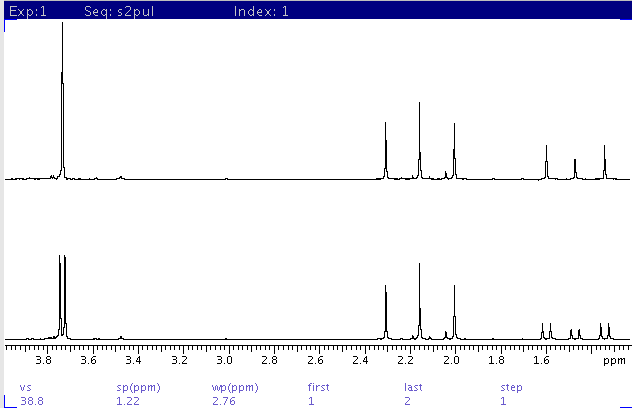
For P31-containing compounds, 1D H1 spectra can be collected with or without P31 decoupling so that P31 coupled H1 peaks can be identified and the coupling constants can also be measured. P31 decoupling can be achieved either with a broadband decoupling scheme (to cover multiple P31 peaks) or with a weak CW power to decouple one P31 peak or multiplet at a time. For high-resolution H1 spectrum when the acquisition (and decoupling) time is long (>1 sec), selective P31 decoupling with weak power is preferred in order to minimize probe and sample heating.

Step 1: Lock and shim
Step 3: Load parameters and tune X-channel for P31
Step 4: Set and submit experiment
Step 5: Processing
Step 6: Finishing up: tune probe X-channel to C13 and recable
Sample:
|

Bottom: P31-coupled H1 spectrum
Top: P31-decoupled H1 spectrum
|
H. Zhou updated Dec 2010